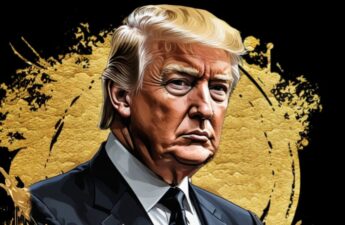The weekend’s tariff-spurred sell-off has accelerated, dropping Bitcoin and Ethereum’s price to $92,900 and $2,400, respectively—all before U.S. markets even opened early Monday morning.
The tariffs imposed by President Donald Trump on Canada, Mexico, and China were set to take effect Tuesday, potentially hitting the North American nations with a 25% import tax on most goods, while Chinese imports faced 10% levies.
Bitcoin and Ethereum have since bounced back to $98,900 and $2,700, respectively, but are still trading 2.3% and 13.6% lower than they were this time last week.
As market participants weighed how an unfurling trade war could impact the cost of U.S. consumer goods and the Federal Reserve’s easing campaign, Bitcoin and Ethereum notched slight recoveries as Monday’s trading progressed. Mexico, meanwhile, reached a trade deal that lifted harder-hit cryptocurrencies like XRP and Dogecoin.
News about the Mexico deal seems to have eased concerns slightly, but that still leaves concerns about how negotiations will unfold with China and Canada.
When Trump threatened Colombia with stiff tariffs last month, the geopolitical episode was resolved in less than two days. But the White House said on Saturday that the newly-imposed tariffs will last “until the crisis is alleviated,” pointing to illegal immigration and fentanyl trafficking.
The White House statement left the door open to expanded tariffs against America’s largest trading partners. And in light of Trump’s threats to impose 100% tariffs on BRICs nations that are trying to ditch the U.S. dollar in global trade and finance, GSR Head of Research Brian Rudick told Decrypt that the tumult’s scope wasn’t clear yet.
“Market participants will now have to assume Trump is fully willing to act on all his other proposals,” he said. “Crypto is generally correlated with traditional assets, so with traditional markets down, it’s no surprise that crypto is getting hit harder.”
At its December policy meeting, Fed officials signaled that potential shifts in trade and immigration policy could make it more difficult to return inflation to its 2% target. If the tariffs against Canada, Mexico, and China remain in place for an extended period of time, Rudick said the case for rate cuts this year may become blunted.
The crypto market swelled following rate cuts last year—which tend to increase liquidity through lower borrowing costs. But Greg Magadini, director of derivatives at Amberdata, told Decrypt that tariffs will effectively have the opposite effect of the Fed’s easing campaign.
While the minimum rate of return that a firm must earn to generate value won’t directly increase, Magadini said the tariffs will remove liquidity by making purchases more expensive.
Meanwhile, the imminent tariffs are impacting the U.S. dollar’s strength, which reflects global liquidity contrasts and investor demand for safe-haven assets. The Dollar Index (DXY), which measures the U.S. dollar’s strength against a basket of foreign currencies, nearly touched last month’s high of 110 on Sunday before settling back to 108.8, as of this writing.
Since Trump is leveraging tariffs as a negotiating tool, GSR’s Rudick said they may prove temporary and become a “solid” entry point for traders. Bullish tenets, such as increased U.S. regulatory clarity and greater corporate adoption, remained intact, he added.
“Trump is slated to speak with officials from Mexico and Canada about the tariffs today,” Rudick said. “Trump cares about market performance.”
Edited by Stacy Elliott.
Daily Debrief Newsletter
Start every day with the top news stories right now, plus original features, a podcast, videos and more.
Source: https://decrypt.co/304137/trump-tariffs-bitcoin-stocks

